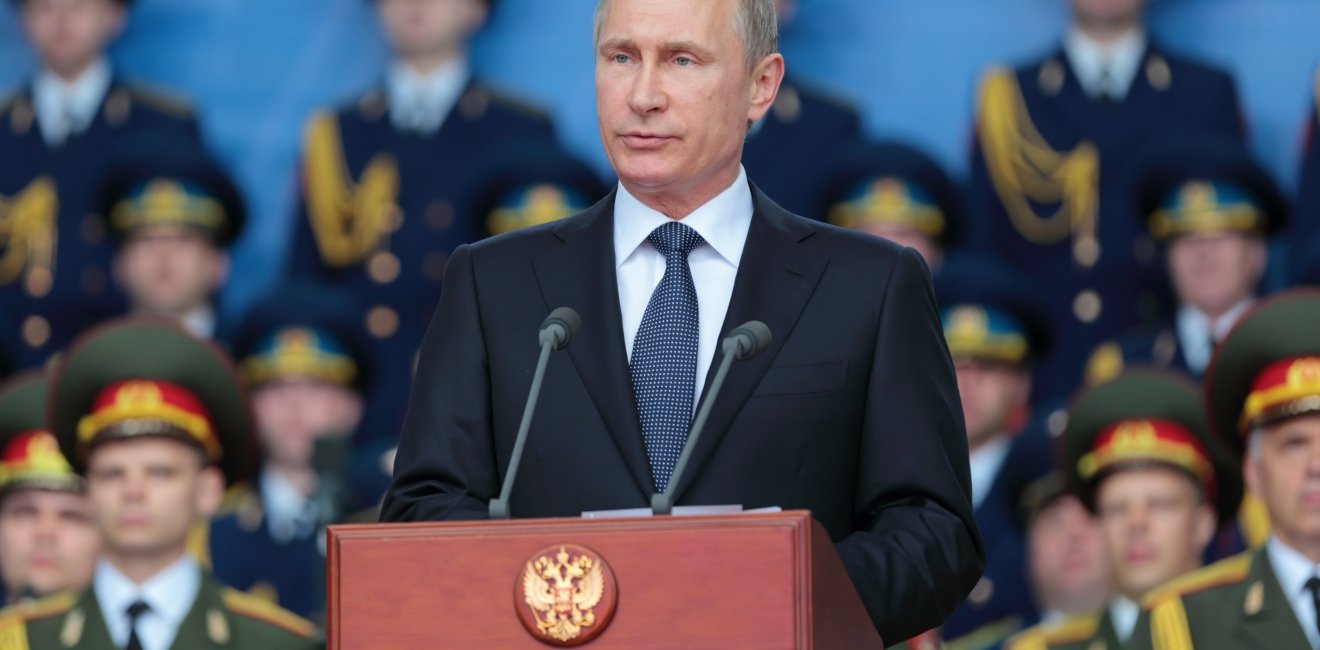
A blog of the Kennan Institute
BY TETYANA MALYARENKO AND STEFAN WOLFF
The current escalation of tensions between Russia and Ukraine is the latest chapter in a long saga of deteriorating relations dating back almost two decades.
From a Western perspective, the key moments are Putin’s infamous speech at the Munich Security Conference in 2007, in part foreshadowed by his April 2005 Duma speech, in which he declared that the collapse of the Soviet Union was the greatest geopolitical catastrophe of the century; the Russo-Georgian War of 2008; the annexation of Crimea in 2014 and the occupation-by-proxy of parts of eastern Ukraine since then; massive troop build-ups on Ukraine’s borders in April and again beginning in November 2021; and Putin’s July 2021 essay “On the Historical Unity of Russians and Ukrainians.”
A Russian narrative of this time period would emphasize a different series of events, and would probably throw in earlier events for good measure—NATO’s air campaign against Serbia in 1999, NATO expansions in 1999 and 2004, and the U.S.-led invasion of Iraq in 2003—and mention the Western-supported “color revolutions” in Georgia in 2003–2004 and Ukraine in 2004–2005. Yet two events in quick succession in 2008 are usually seen as the key moments when relations between Russia and the West began to turn in the direction of a new cold war that is now in danger of turning hot: Western recognition of Kosovo’s independence in February 2008 and confirmation, at the April 2008 NATO summit in Bucharest, of a pathway to Alliance membership for Georgia and Ukraine.
These competing narratives form the background against which the current crisis between Russia and the West is playing out, a crisis in which Russia’s demand for security guarantees amounts to nothing less than a return of the Cold War geopolitical theme of zones of influence, with the added complications of a third major player, China, and a larger but less united Western alliance.
What Russia might see as the trigger of the current deterioration—Kosovo’s declaration of independence in February 2008 and its subsequent widespread recognition by the West—thus has its origins in the late 1990s. It coincides with the end of the Yeltsin period, which is associated with the domestic turmoil and economic chaos that accompanied Russia’s decline from Soviet superpower status. Yet 1999 is also the year that saw Vladimir Putin elevated to the top of the Russian political hierarchy, where he has been ever since and now has a constitutional option to remain until 2036.
Putin initially presided over a period of sustained economic growth, after a decade of steady decline. According to World Bank data, Russia’s GDP in 1999 was just under $200 billion, from where it rose steadily, interrupted only by the 2008 global financial crisis, to almost $2.3 trillion in 2013. By 2016 it had dropped to $1.3 trillion. It recovered to $1.7 trillion in 2019 and dropped again to below $1.5 trillion in 2020—roughly two-thirds of its 2013 high. This puts Russia’s GDP below Canada’s ($1.6 trillion) and Italy’s ($1.9 trillion).
It is a similar story with foreign direct investment (FDI): from $3.3 billion in 1999 to $75 billion in 2008, recovering after the global financial crisis to $62 billion in 2013. Since then the trend has been uneven but overall declining. FDI in 2019 was less than $32 billion, just over half its 2013 value.
This pattern also holds for military expenditure. From $6.5 billion in 1999, it rose to $88.4 billion in 2013 and then declined to $61.7 billion in 2020. Partly reflecting the fortunes of Russia’s oil and gas–dominated and dependent export economy, this represents a current share of GDP of 4.26 percent—the second highest of the Putin period, after 5.43 percent in 2016 and up from 3.7 percent in 2018.
Add to that an impending demographic crisis and uncertainty over the country’s ability to move to an internationally competitive low-carbon economy, and the longer-term prospects for a sustainable return to great power status look less encouraging. Put differently, Russia’s ability to match its great power aspirations with an ability to project power accordingly is likely to diminish further over time.
These long-term trends—a deeply ingrained Russian narrative of a threatening West, more than a decade of growing alienation and hostility between the two sides, and a challenging economic future ahead for Russia—appear to make a Russian move on Ukraine more likely now.
Several other factors should also be considered. The very public way in which diplomacy has been conducted over the past few months has exposed divisions in the West, but has also confirmed that any Western response would fall short of an out-of-area military engagement and remain focused on protecting Alliance members neighboring Ukraine from potential spillover effects. The threat of sanctions is substantial, and there is clear evidence that sanctions are harmful to the Russian economy, as indicated by the GDP and FDI data cited above. Their effectiveness in deterring Russian aggression, however, is debatable. Diplomatic talks are still ongoing, but so far neither Putin's conversation with Biden nor Lavrov's meeting with Antony Blinken nor any other engagements and initiatives have led to a noticeable reduction in tension.
In Ukraine itself, preparations for an imminent Russian invasion are in full swing, including the adoption of a doctrine of “national resistance” and the delivery of Western arms and equipment. The latter are part of a longer-term engagement to build up Ukrainian military capabilities, which has also involved deliveries of other military equipment, the construction of two military bases, in Mykolaiv and Berdyansk, and the rebuilding of the Ukrainian Black Sea Fleet. However, these are hardly more than symbolic gestures in the absence of real security guarantees from NATO or the United States and do not fundamentally alter the balance of power between Russia and Ukraine. Like economic and other sanctions, they may increase the costs for Russia, but it is doubtful that they will completely change the Kremlin’s cost-benefit calculations.
This does not, however, make a military invasion a foregone conclusion. Western divisions and unwillingness to commit to security guarantees make the prospect of Ukrainian NATO membership a very distant one at best. Moreover, the weakness of the Ukrainian state, further exacerbated by eight years of an undeclared war by Russia against it, leaves Russia with other options to manage the security threats it perceives in relation to Ukraine. Simply continuing a campaign of ceasefire violations at the line of contact in Donbas, economic pressure, cyberattacks, and information warfare may suffice from a Russian point of view to achieve Moscow’s security goals in the near and mid-term without risking potentially devastating Western economic retaliation that would make any Ukrainian “adventure” unsustainable and harm Russia’s domestic development prospects.
In addition, the deeper the rift with the West, the more Russia’s dependence on China is likely to increase, a relationship in which Russia will always be the junior partner. A military invasion of Ukraine would also tie up Russian resources that might be needed more urgently in securing stability and influence in Central Asia, as became evident in the aftermath of the Western withdrawal from Afghanistan and the recent events in Kazakhstan. Instability in the South Caucasus and NATO member Turkey’s ever-growing role there are also likely to be a concern for Moscow for the foreseeable future. Moreover, the conditions of consolidating existing zones of influence in these two post-Soviet regions carry fewer risks than a military invasion of Ukraine.
This does not, however, take Ukraine off the Russian agenda. On the contrary, the consolidation of a Eurasian zone of influence—a relatively benign neighborhood across most of the post-Soviet near abroad—would be incomplete without Ukraine. But there is a spectrum of what would count as success in this context. The logic of competitive influence-seeking does not necessarily require a fully compliant, pro-Russian regime in Kyiv that is permanently excluded from NATO (and EU) membership. A Ukrainian state with weak and contested institutions, a state characterized by poverty, poor public financial management, corruption, inroads into human rights protections, and an inefficient system of public services, from health care to education, may be sufficient from a Russian perspective. This situation would not provide the kind of support for the idea of a "Russian world" in Ukraine that the Kremlin might desire. But it would leave open the option of a future invasion of a state that few want to defend.
The opinions expressed in this article are those solely of the authors and do not reflect the views of the Kennan Institute.
Authors

Professor of International Security at the University of Birmingham


Kennan Institute
After more than 50 years as a vital part of the Wilson Center legacy, the Kennan Institute has become an independent think tank. You can find the current website for the Kennan Institute at kennaninstitute.org. Please look for future announcements about partnership activities between the Wilson Center and the Kennan Institute at Wilson Center Press Room. The Kennan Institute is the premier US center for advanced research on Eurasia and the oldest and largest regional program at the Woodrow Wilson International Center for Scholars. The Kennan Institute is committed to improving American understanding of Russia, Ukraine, Central Asia, the South Caucasus, and the surrounding region through research and exchange. Read more

Explore More in Focus Ukraine
Browse Focus Ukraine
Talking to the Dead to Heal the Living

Ukrainian Issue in Polish Elections


